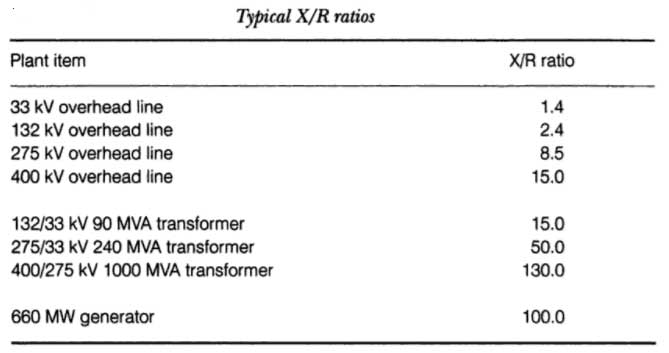The X/R ratio of 220 kV line as compared to 400 kV line is
The X/R ratio of 220 kV line as compared to 400 kV line is
Right Answer is:
Smaller
SOLUTION
The X/R ratio of 220 kV line as compared to 400 kV line is Smaller.
X/R Ratio
- The reactance to resistance ratio (X/R) and the power factor of a faulted circuit change, the magnitude of the asymmetric current will vary with respect to the symmetric current.
- As this ratio increases and the power factor decreases, the asymmetric current will increase.
- A ratio, known as the factor of symmetry, of the asymmetric to the symmetric current can be found for different X/R ratios and corresponding power factors.
- When the symmetric current and the X/R ratio are known, the maximum asymmetric current can be found. This is useful in the design of fuse cutouts which are rated asymmetrically.
- Every electrical circuit contains resistance (R) and inductive reactance (X) and they are electrically in series. Their combined effect is called Impedance.
- X depends on the equivalent distance between phases (which increases at higher voltages) and the GMR of the conductor. so you can have (X/R) ratio as high as 10 -15 for a 400 kV line.
When the circuit X/R ratio is 15 or less, the asymmetrical short-circuit duty never exceeds the symmetrical short-circuit duty by a proportion greater than that by which the circuit breaker asymmetrical rating exceeds the symmetrical capability. It may only be slightly higher at four-cycle contact parting time.
For X/R ratios higher than 15, the de component of the short-circuit current may increase the short-circuit duty beyond the compensation provided in the rating structure of the breakers.
In the case of in-feeds from high voltage and extra-high voltage systems, a good approximation is to set Zs = Xş as the X/R ratio of the source impedance is large.

